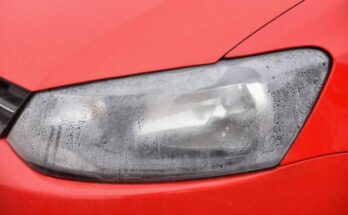An overheating car can be a nightmare situation. Excessive heat can cause serious damage to your car’s engine. There are many reasons for a car to overheat, and there are just as many ways to prevent it. But first it’s important to know about why your car is overheating.
1. Coolant is too low
When your engine overheats, this is the first thing you should check. Look at your coolant level and determine whether you need to add more. Ample coolant is vitally important for your engine, as it flows through and cools everything down, especially when you are traveling at highway speeds.
2. Cooling fan isn’t working
This can be caused by a few different problems, but it can be easy to identify. When you see the temperature gauge creeping up, pull over and look at the fan. If the fan is sluggish or not working at all, you have a problem. There are actually two possibilities here:
- The electric fan is bad or the fan motor might have burned out, and you could need a new one.
- The radiator auto switch is bad. When your car reaches a certain temperature, it tells the fan to switch on. But if the switch is bad, then your car never gets the message, and continues to cool the engine as if you were idling – not driving. Hence you might need a new radiator switch.
3. Fan belt is broken
If your fan belt is broken, your car will overheat rather quickly. A broken fan belt might also mean that other parts of your engine aren’t working properly. A fan belt is more common on older cars, and is very cheap and easy to fix.
4. Thermostat is staying closed
When your car begins to heat up, a thermostat keeps track of the temperature. When that temperature gets to a certain point, the thermostat opens to allow more coolant to flow through, thus cooling the engine. But when it stays closed, the car seems to think it is still idling, and that means that it uses a minimal amount of coolant. The result is overheating, especially when you are driving fast on the highway.
5. Radiator is clogged up
That’s mostly the case with older cars with several thousand kilometers on the odometer; the radiator can be filled with gunk that keeps it from operating properly. Flushing a radiator can be done every year, takes just a little bit of time, and helps ensure that your radiator never gets clogged up to the point of overheating.
6. Coolant is leaking
If you notice that your car continues to overheat no matter what you do, look underneath the car when you stop and park. If you see a good amount of liquid underneath your car, you could have a coolant leak. This can be confirmed by checking the coolant levels; if they are low even though you recently filled it up, you’ve found the problem. You should have the problem repaired as soon as possible.

What to Do When Your Car Overheats?
When your car is overheating, you should not panic. After all, this car could soon leave you on the side of the road, right? If you take fast action, you might be able to get to the nearest mechanic/ workshop before the car shuts down. Here’s what to do when your car is overheating:
1. Shut down the air conditioner
If you see the temperature gauge going up, try turning the air conditioner off. Open up all the windows. This will take the pressure off the engine and give you a chance to get to help before the car dies.
2. Turn on the heater
This might seem like a terrible idea during the summer, but the engine heat is what fuels the heater, so by turning on the heat, you are allowing the car to cool down just a little bit. If you must do this during the summer, make sure to roll down your windows and position the vents away from you!
3. Pull over as soon as possible
If you are in a city area, you might be able to find a workshop almost immediately. But if you are traveling a long distance or out in the middle of nowhere, you might have to pull over before you get to a place where you can get help. If you must pull over, and if you can see steam coming out, don’t open the hood until the engine stops steaming – this could take up to 30 minutes.
4. Keep some coolant/ water in the car
You should always have a small bottle of coolant in the car for issues like this. If you don’t have coolant, water will do fine. But again, be sure not to open up any part of the engine until it is all cool to the touch. You will have to be very patient! Once you can open up the engine, check the coolant levels and pour the coolant into the proper reservoir, if necessary.
5. If you are in traffic…
Park your car and then rev the engine gently! This moves some coolant through the engine and helps to keep things cooled down. You should also aim to “creep” rather than to stop and go in traffic.
6. Call for a tow truck
At this point, if you can’t spot the problem and fix it right there, you will have to call a tow truck to get you to help. Fortunately, most radiator problems can be fixed quickly, but you should be prepared for the idea that your problem might take much more time to repair.
There are a few things you should always remember when dealing with an overheated car.
- Never open the radiator cap while the radiator is hot, as the release of pressure could lead to serious steam and liquid burns. Even when the radiator is cooled down, be careful when you open it. Use a thick rag to protect your hand, and when you open the radiator, be sure to open the lid so that it faces away from you, just in case steam is released. Never lean over the radiator to look into it.
- Don’t try to pour cold water directly on the engine since the abrupt temperature change can crack the engine block and small repair may turn into a serious, expensive problem.
- If your coolant is entirely gone from a serious leak, never try to drive the vehicle. Call a tow truck instead.

A computer animation professional with over 23 years of industry experience having served in leading organizations, TV channels & production facilities in Pakistan. An avid car enthusiast and petrolhead with an affection to deliver quality content to help shape opinions. Formerly written for PakWheels as well as major publications including Dawn. Founder of CarSpiritPK.com





